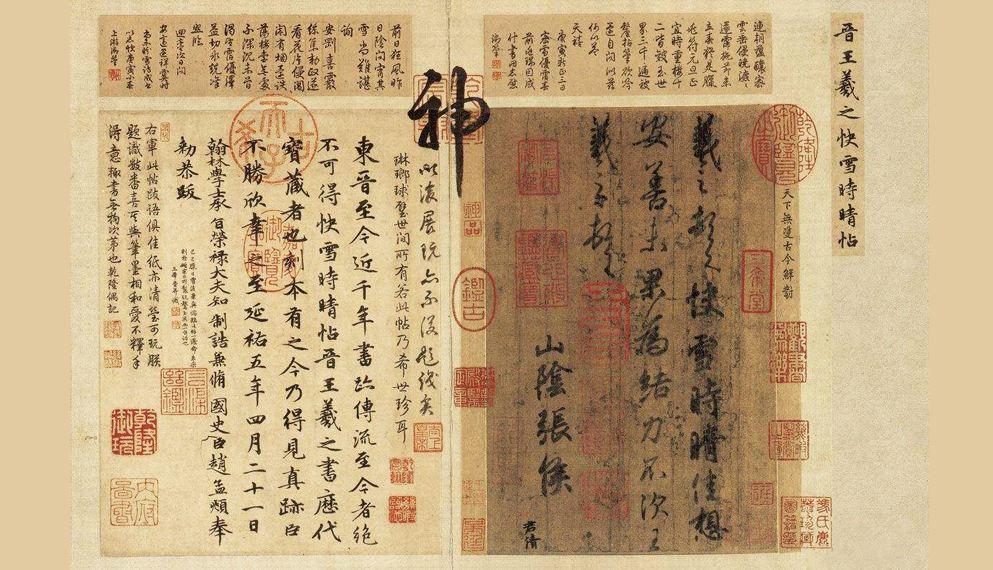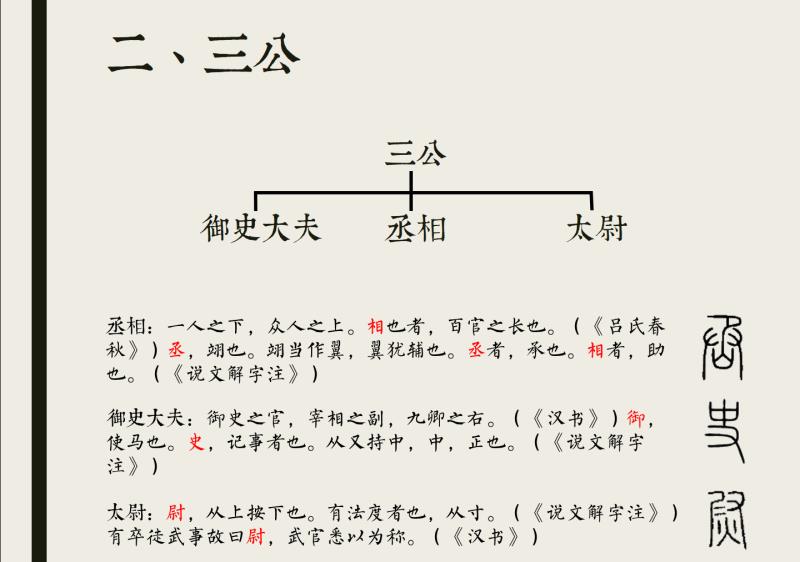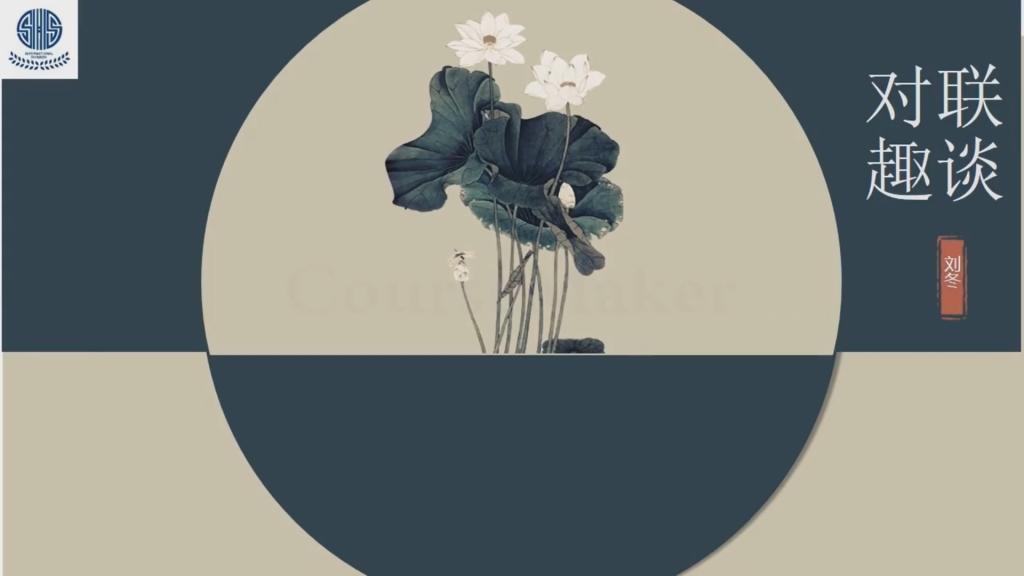
We are always impressed by how “small” things can add up to produce larger outcomes: little drops of water make a mighty ocean; numerous trees start a massive forest; various plants create a beautiful garden. As is said in a Chinese proverb, “Joining together, we are invincible.” It is true that everyone has their strengths, and we rely on one another in a group. As long as each member of the team presents their talents and works together, we are able to develop better products, build an efficient team, and meet our goals.
The Middle School Chinese Department of SHSID sets an good example of aligning individual contributions to produce superior team performance. Apart from completing their routine teaching work on the LC platform, our Chinese teachers come together and brainstorm creative ideas in order to engage students in different activities. Recently, they designed the “Viewing of China” Lectures Series, which involves traditional Chinese culture, poetry and songs, history and politics, and many more subjects. The students were really excited to participate in this meaningful series of lessons provided by the highly qualified Chinese teachers of SHSID, and we have also received a lot of great feedback from their parents.
“Traditional Chinese Culture” is a broad topic. As we know, traditional culture is rooted in everyday life and includes Chinese characters, languages, poetry, calligraphy, music, drama, paintings, Chinese chess, festivals, martial arts, folk arts, etc. The teachers of the Middle School Chinese Department focused on different aspects of traditional culture and thus prepared eight thematic sections: “Lanting Xu Legend”, “Stories in Shishuo Xinyu”, “The Three Kingdoms”, “The History of the Imperial Officials in China”, “Looking up at the Trees”, “Fun Intro to Spring Festival Couplets”, “Immortal Sages”, and “Fun Intro to Zhouyi”. Exposed to wide ranges of Chinese literature and history, students were able to gain deeper insight into Chinese culture.
1. Chinese calligraphy, a unique visual art related to Chinese characters, has also greatly influenced the art of calligraphy in surrounding countries and regions such as South Korea, Japan, Mongolia, etc. Beyond Chinese calligraphy, the art of calligraphy is used for languages all over the world like Mongolian calligraphy, Arabic calligraphy, English calligraphy, and so forth. Mr. Ni Minxue let students wander in the vast ocean of Chinese literature and history—students set off to experience the ink and the brush and to explore the past and present ofLantingji Xu.

2. Shishuo Xinyu,regarded by Lu Xun as “a textbook representation of historical celebrities and scholars”, contains anecdotesof literati who lived from the second through the fourth centuries. In the lecture by Ms. Liu Qiong, leader of the Middle School Chinese Department, the stories were told in a calm or interesting way and unveiled the lives of celebrities during the Wei and Jin period. By diving into the five categories of the book —“Virtuous Conduct”, “Speech and Conversation”, “Letters and Scholarship”, “Quick Perception”, and “Appearance and Manner”—students understood the differences between Shi (the noble) and Shu (normal people), learned of the various ideas held by the noble people in that time, and discovered the origins of freedom.
3. Ms. Meng Shiyue is very knowledgeable about Cantonese opera and writing. She chose “the Battle of Chibi” as the material and depicted the characters during the Three Kingdoms Period. By doing so, she helped students become thoughtful readers of historical and literary materials. Instead of elaborating on everything, the teacher encouraged students to activate their imagination and explore the worlds of the three kingdoms on their own.

4. Mr. Liu Yuqi, who teaches both in the local and international division, led students in the study of official positions in ancient China. Based on the “Three Gongs and Nine Qings” system,Book of Han,Book of the Later Han, andShuowen Jiezi Zhuwritten by Duan Yucai—a Chinese philologist of the Qing dynasty—the teacher elaborated on the origins of the positions, the selection of political officials, and the charm of ancient Chinese characters.

5. Starting with the two jujube trees in Lu Xun’s prose work “Autumn Night”, Ms. Liu Suqiong guided students to celebrate and capture the beauty of everyday life. This lecture provided a new perspective—“Looking up at the Trees”—to interpret this prose passage. It is important for students to apply what they learn from life when they are reading a literary work and pay attention to the sentences that might go unnoticed or be misunderstood.
6. Couplets have a history of more than a thousand years in China. Many personalities in Chinese history were incredible at producing couplets, such as Su Dongpo in the Song era, Xie Jin in the Ming dynasty, and Ji Xiaolan in the Qing dynasty. But couplets are not limited to the scholars. It is also part of Chinese culture. For example, during the Lunar New Year, people write the couplets on red paper and stick them on walls. Ms. Liu Dong ingeniously combined the development of spring couplets, their use in modern life, and the most famous couplets made by the scholars and ended the lecture with a popular Xiangsheng joke. Students can’t wait to know more about couplets.

7. Throughout the history of China, there are people who stand up for others and fight for justice when the country is in big trouble. In Mr. Li Teng’s lecture “Immortal Sages”, he directed the students to explore how the sages save the country and influence Chinese culture by considering human rights, setting moral rules and regulations, and contributing to the country’s development.
8. Zhouyi,knownas the oldest of the Chinese classics, provides the worlds of religion, philosophy, literature, art, and many other areas of knowledge related to human life. Since it is quite obscure, people often find it hard to read. To enable students to accept this text of Chinese civilization, Mr. Zhou Shengyuan introduced the background information using clear, simple language and taught students a simple method of divination. Beyond this, students learned the philosophical and cosmological stances in Chinese classics. The teacher expected that this lecture would motivate students to investigate howYijingexplains the laws of the nature and to describe everything in the world with a concept of dualism—“yin and yang”.
It is not easy to teach online in this unprecedented time; however, the teachers have succeeded thanks to the combined efforts of everyone. At SHSID, we embrace “us” rather than “you”, “me” and “them”. We believe in the power of teamwork in allowing teachers to contribute their expertise and skills towards course development and school improvement. We hope that we can inspire a love of learning and thinking in our students by creating an environment for curiosity to thrive.
(Written by Liu Dong Translated by Huang Shiyuan Pictures by Middle School Chinese Department)